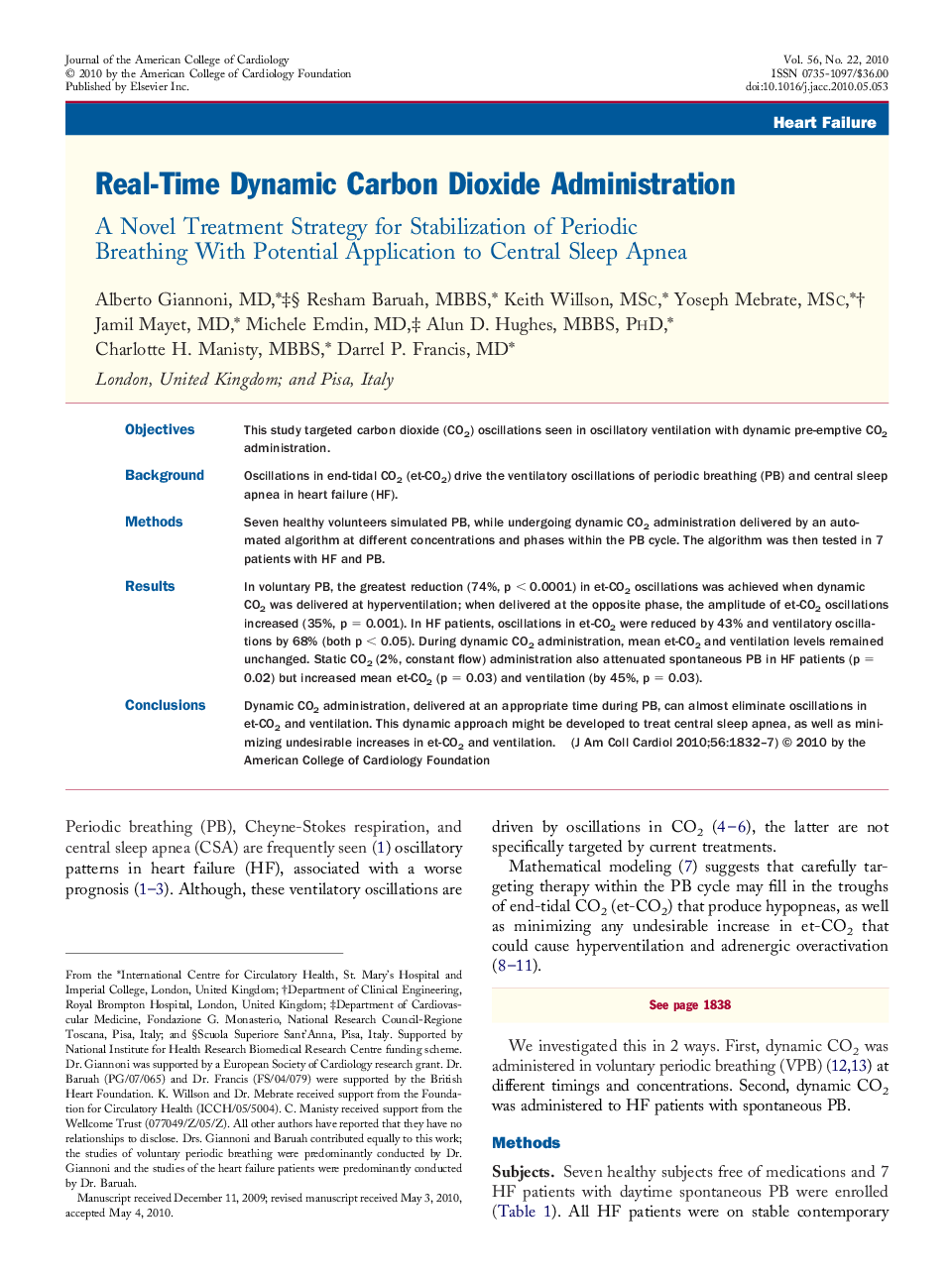| Article ID | Journal | Published Year | Pages | File Type |
|---|---|---|---|---|
| 2950750 | Journal of the American College of Cardiology | 2010 | 6 Pages |
ObjectivesThis study targeted carbon dioxide (CO2) oscillations seen in oscillatory ventilation with dynamic pre-emptive CO2administration.BackgroundOscillations in end-tidal CO2(et-CO2) drive the ventilatory oscillations of periodic breathing (PB) and central sleep apnea in heart failure (HF).MethodsSeven healthy volunteers simulated PB, while undergoing dynamic CO2administration delivered by an automated algorithm at different concentrations and phases within the PB cycle. The algorithm was then tested in 7 patients with HF and PB.ResultsIn voluntary PB, the greatest reduction (74%, p < 0.0001) in et-CO2oscillations was achieved when dynamic CO2was delivered at hyperventilation; when delivered at the opposite phase, the amplitude of et-CO2oscillations increased (35%, p = 0.001). In HF patients, oscillations in et-CO2were reduced by 43% and ventilatory oscillations by 68% (both p < 0.05). During dynamic CO2administration, mean et-CO2and ventilation levels remained unchanged. Static CO2(2%, constant flow) administration also attenuated spontaneous PB in HF patients (p = 0.02) but increased mean et-CO2(p = 0.03) and ventilation (by 45%, p = 0.03).ConclusionsDynamic CO2administration, delivered at an appropriate time during PB, can almost eliminate oscillations in et-CO2and ventilation. This dynamic approach might be developed to treat central sleep apnea, as well as minimizing undesirable increases in et-CO2and ventilation.
